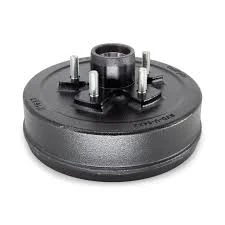brake drum conditions
Understanding Brake Drum Conditions Importance and Maintenance
Brake drums play a critical role in the overall functioning of a vehicle's braking system. They are essential components of drum brake systems, which are commonly found in many vehicles, especially in the rear axle assembly. Understanding brake drum conditions and maintaining them properly is vital for ensuring optimal vehicle performance and safety.
What Are Brake Drums?
Brake drums are cylindrical components that house the brake shoes, which come into contact with the inner surface to create friction. When a driver presses the brake pedal, hydraulic fluid is sent to the brake wheel cylinder, pushing the brake shoes outward against the drum. This friction slows down or stops the vehicle. Given their vital function, the conditions of brake drums are crucial for safe driving.
Signs of Worn Brake Drums
Several signs indicate that brake drums may be in poor condition
. These symptoms should prompt immediate inspection and potential replacement.1. Vibration or Pulsation If the brake pedal vibrates or pulses when pressed, it could indicate that the drum is warped. Warping usually occurs due to excessive heat generated from prolonged braking, causing uneven wear on the drum surface.
2. Unusual Noises Excessive squeaking or grinding noises during braking are clear indicators that the brake drums need attention. These sounds arise when the brake shoes have worn down excessively, leading to metal-on-metal contact within the drum.
3. Poor Braking Performance If you notice a significant decrease in braking power, such as longer stopping distances or a feeling of softness in the brake pedal, it may signal that the drum or the entire braking system needs inspection.
brake drum conditions

4. Visible Damage Regularly inspect your brake drums for visible signs of cracks, rust, or corrosion. Surface damage can lead to decreased braking efficiency and may necessitate immediate replacement of the component.
Importance of Maintenance
Regular maintenance of brake drums is essential for vehicle safety. Here are some important practices to ensure that your brake drums remain in good condition
1. Schedule Regular Inspections Brake systems should be inspected regularly, ideally every 12,000 miles or as recommended by the vehicle manufacturer. During these inspections, technicians can assess the condition of your brake drums and identify any issues early.
2. Replace Worn Brake Shoes Since brake shoes wear down over time, replacing them at the first sign of wear is crucial. Failing to replace them can cause further damage to the brake drums, ultimately leading to more costly repairs.
3. Keep Drums Clean Dirt, debris, and moisture can accumulate in the brake drum area, affecting performance. Regular cleaning can help prevent corrosion and ensure that the drums function properly.
4. Allow Cooling Time After making several hard stops, it’s essential to give your braking system some time to cool. Overheating can cause brake drums to warp, leading to premature failure.
Conclusion
In summary, brake drum conditions are vital for the safety and performance of a vehicle. By recognizing the signs of wear and conducting regular maintenance, drivers can ensure that their braking systems function effectively. Proper care for brake drums not only enhances driving safety but also prolongs the life of the braking components, making it a key aspect of responsible vehicle ownership. Always consult with a professional mechanic or technician if any signs of brake issues arise, ensuring your vehicle remains safe on the road.
-
The Power and Reliability of Brake DrumsIindabaAug.27,2025
-
The High-Quality Truck Brake DrumsIindabaAug.27,2025
-
Quality Brake Drums for Reliable PerformanceIindabaAug.27,2025
-
Get the Quality Semi Trailer Brake Drums for Your FleetIindabaAug.27,2025
-
Everything You Need to Know About Brake DrumsIindabaAug.27,2025
-
Enhance Your Vehicle's Performance with Reliable Brake DrumsIindabaAug.27,2025
-
Truck Drum Brake Spring Replacement ProcedureIindabaAug.22,2025


